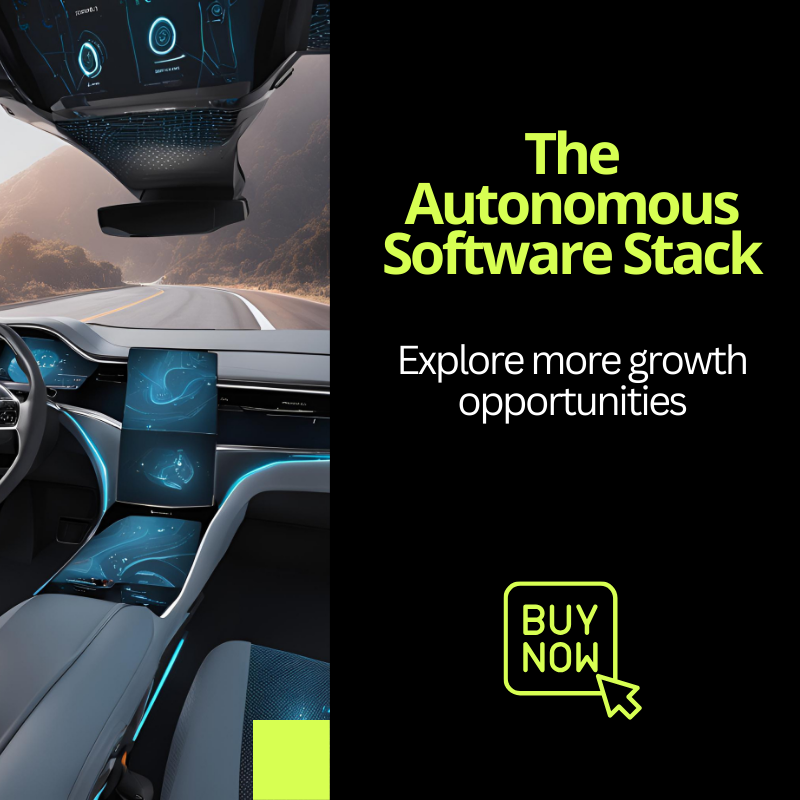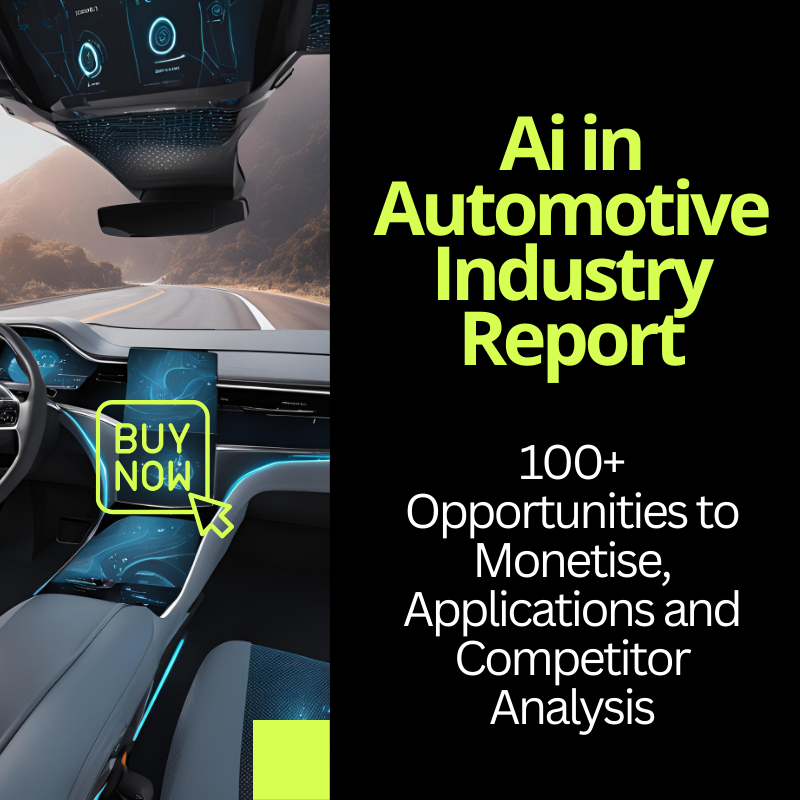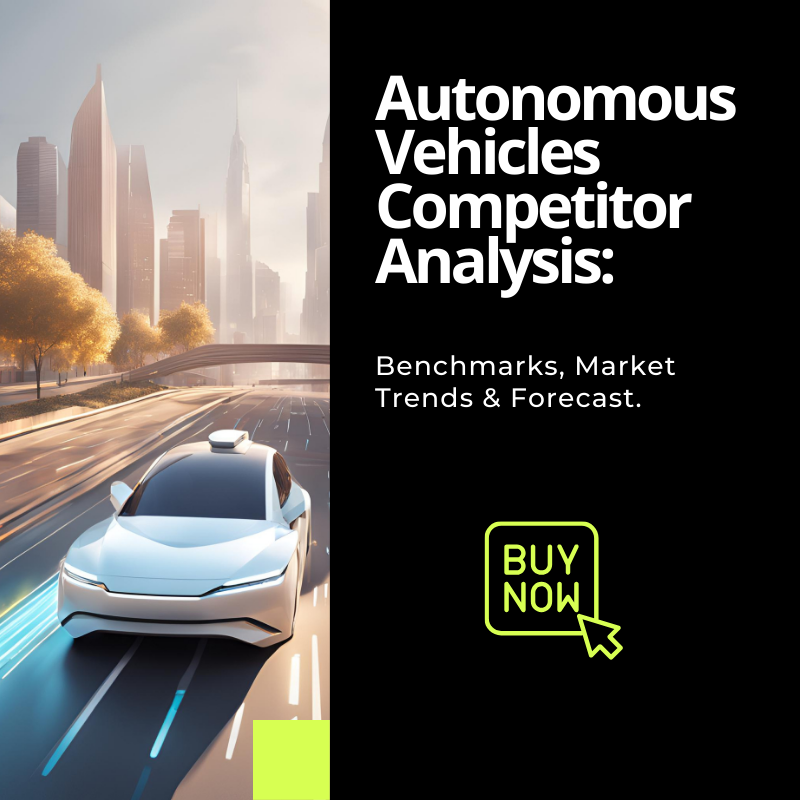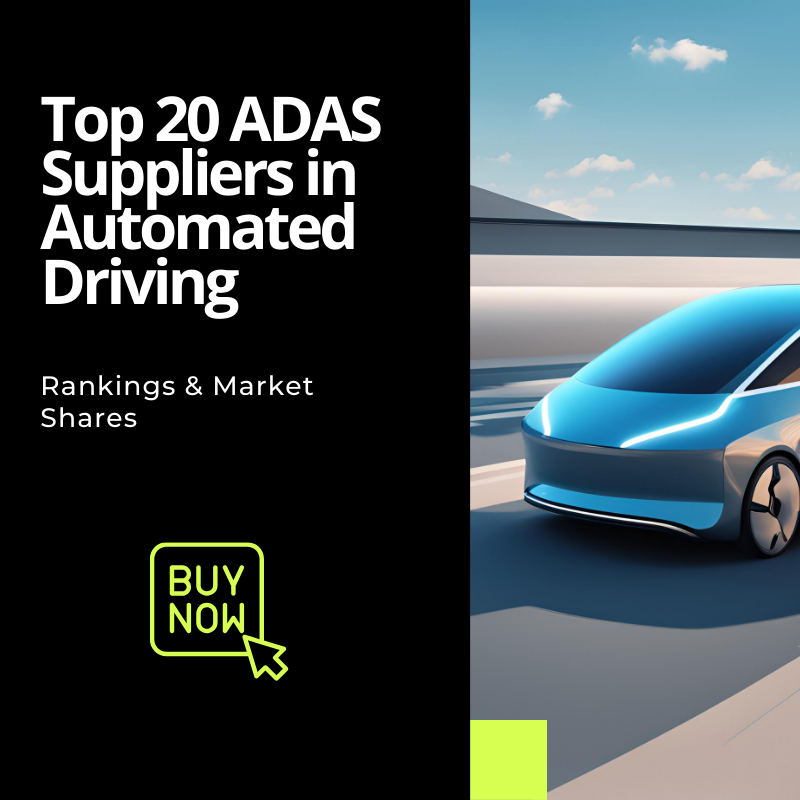Your basket is currently empty!
The 10 Biggest Opportunities in Autonomous Driving in 2025
We are here to help! Contact us for custom research or automotive technology databases.
Posted by:
Published:

Auto2x brings real-time automated intelligence to its Live Scoring of Opportunities in Autonomous Driving to help players respond faster to market changes and empower their strategies with quantitative methods
Auto2x brings real-time data and a synthesis of business, innovation metrics and expert opinion to develop a Live Scoring of Opportunities in Autonomous Driving to help players develop effective strategies and business models.
- Real-time data helps players respond faster to changing market needs with real-time information about changes in scoring;
- Automated trend identification saves time from manual analysis with dynamic taxonomies across technologies, markets and players;
- Automated technology and innovation monitoring leverage expert methodologies to pinpoint breakthroughs and trigger points impacting the opportunity landscape.
To access the Live ranking of Opportunities in Autonomous Driving contact us here.
Autonomous Vehicles present huge opportunities but come with significant risks due to techno-commercial challenges
There are big opportunities to generate new revenue pools, expand to new promising markets, and embrace innovative business models to monetise and advance products to solidify their differentiation.
However, incumbents and new entrants must navigate the opportunity landscape carefully due to financial constraints and techno-commercial challenges.
- There is increasing pressure for better financial performance (ROI, EBIT, CAPEX), leading to organisational restructuring
Continental1 evaluates making Automotive an Independent Company and to Prepare Spin-off in Q4 2024. Automotive is their biggest division, with 20.3 Billion Euros in revenue and covers ADAS, among other products.
Competition in ADAS, Autonomous Driving and Autonomous Vehicles is fierce2 as vehicle manufacturers, automotive component suppliers, and new entrants strive to monetise the huge opportunities for new revenues from sensors, over-the-air (OTA) features and novel services.
- Despite significant investments, technological challenges in autonomous driving software persist leading to delays in deployment roadmaps and tech pivots.
Mobileye 3is ending its development of FMCW Lidar due to positive progress in EyeQ6 and imaging radar.
- Regulatory roadblocks and political uncertainty over tariffs (e.g. semicondictor components) affect the ADAS supply chain.
The Methodology for Scoring Opportunities in Autonomous Driving
Auto2x launches new Live Scoring of the Biggest Opportunities in Autonomous Driving segmented by Market Potential and Technological Readiness
Auto2x analysed business data, innovation metrics, investments and interviews with experts to rank Opportunities in Autonomous Driving across 3 parameters.
- Market Potential of opportunities across ADAS features, sensors, AI, computing, robotics, etc.
- Technological Readiness Level (TRL from 1 to 9-Commercialised)
- Opportunity Score: a quantitative metric of all the sub-parameters from Market Potential and TRL.
In total, we have identified more than 100 Opportunities in Autonomous Driving segmented into 10 categories.
- Generate new Revenue Pools
- Expand to new Markets
- Expand to new Sectors
- Improve Operational Efficiency
- Develop your Ecosystem
- Improve Customer Experience
- Embrace innovative Business Models
- Product Advancements & Innovation
- Regulatory mandates and innovation for Compliance
- Emerging Signals
The 10 Biggest Opportunities in Autonomous Driving in 2025
Learn which opportunities in Autonomous Driving across the 10 categories should be at the top of your agenda. This ranking considers the Market Potential and TRL in 2025.
This means that promising opportunities that are still not deployed to realise high revenues have a lower score.
The Live Scoring system for opportunities in autonomous driving identifies several promising opportunities that stakeholders can leverage as the technology matures and market dynamics evolve. Key opportunities include:
- Advanced Driver Assistance Systems (ADAS): The transition from basic ADAS to more sophisticated systems, such as Level 3 and Level 4 autonomy, is expected to create significant demand. Vehicles equipped with enhanced ADAS features can improve safety and user experience, leading to higher adoption rates.
- Robo-Shuttle Services: The pilot programs for autonomous shuttles in urban areas are gaining traction, particularly in regions like the U.S., China, and Europe. These services can optimize public transport and reduce congestion, presenting a lucrative market for operators.
- Sensor Technology Development: As vehicles become more autonomous, there is a growing need for advanced sensors (e.g., lidar, cameras) that can accurately perceive the environment. Companies specializing in sensor technology stand to benefit significantly from this demand.
- Data Monetization: Autonomous vehicles generate vast amounts of data that can be analyzed for insights into traffic patterns, driver behavior, and vehicle performance. Companies can monetize this data through partnerships with urban planners or transportation agencies.
- Smart City Integration: The integration of autonomous vehicles with smart city infrastructure (like traffic lights and road sensors) presents opportunities for enhancing urban mobility solutions. This synergy can lead to reduced traffic congestion and improved road safety.
- Insurance Innovations: As the liability landscape changes with the introduction of autonomous vehicles, there is potential for new insurance models tailored specifically for self-driving technology. This could include usage-based insurance or policies that account for reduced risk.
- Innovation for Compliance: With evolving regulations around autonomous driving, there is a growing need for expertise in compliance and safety standards. Consulting firms that specialize in navigating these regulatory frameworks can help find a niche market.
Which new Revenue Pools Players should Focus on
Sales of ADAS sensors and next-generation components is one of the biggest opportunities in Autonomous Driving: Redundant perception is crucial for safe path planning, leading to the rise of sensor set. Price competition, supply chain constraints, and evolving standards for interoperability across OEMs are the main challenges.
ADAS Average Content per Vehicle range from €489 for Lv.2, with 17 sensors per car, to €960-2,100 for Level 3 depending on the usage of lidar (L3+ HWP) or not for redundancy
Automotive Computing, Domain Controllers and Supercomputing: The computing power required for a Lv.2 vehicle is 10 TOPS (tera operations per second). Lv.4 exceeds 100 TOPS, Lv.5 vehicle will require a 1,000 TOPS computing processing power.
The potential of computing is high, drawing the attention of new entrants. Lenovo4 entered the Autonomous Driving market with 2,100 TOPS Domain Controller for Level 2-4 Autonomy starting production in 2025. However, there is risk because of the complexity and costs in developing scalable solutions; reliance on chip supply stability.
Memory: The massive data processing needs in autonomous systems fuels growth in production and specialization of memory systems for AI-driven tasks and high data processing in autonomous vehicles. Players need to consider the costs of production and maintaining performance standards in a rapidly changing tech landscape.
Features of demand: Capitalize on demand for Level 2-3 ADAS features through mass deployment and safety-focused offerings. However, there are market saturation risks and regulatory variability across regions.
Licence ADAS and Autonomous Driving Software to carmakers and suppliers is one of the most promising opportunities in Autonomous Driving. Players need to consider Intellectual property competition, cybersecurity risks, and dependency on integration partnerships.
Autonomous Truck Driver-as-a-Service: Deploy autonomous truck services tailored to on-demand logistics and long-haul freight solutions. The challenges are regulatory hurdles, operational safety challenges, and slow adoption from conservative logistics operators.
Flexible, dynamic pricing for ADAS, e.g. hourly pricing or based on usage patterns.
There is a big opportunity to bundle autonomous driving services as part of subscription-based or pay-per-use models, addressing customer demand for flexibility and convenience.
Expand to new Markets
China, Europe, the U.S and Japan are the Top Autonomous Driving Hubs based on deployment of autonomous driving and innovation intensity.
Honda and Nissan launched Level 3-Conditional Automation in Japan in 2021 leveraging the update of the UNECE regulation. Level 3 is coming to Germany and the US in 2024 from BMW and Mercedes-Benz, among others.
The potential of commercialising Level 2-ADAS in India is high. However, there are still techno-commercial challenges in systems and infrastructure.
Expand to new Sectors
Autonomous trucks are already expanding in the mining sector. Expand deployment of autonomous trucks in the mining sector for improved efficiency, safety, and cost reduction.
Other promising sectors include Autonomous deliveries, Autonomous logistics and Autonomous vehicles in AgiTech and Industrial robotics.
How to Improve Operational Efficiency
Some of the opportunities in autonomous driving to improve operational efficiency are: Dynamic Fleet Optimization, Flexible, Dynamic Pricing Models
Tips to Develop your Ecosystem
Connected Road Infrastructure: Implement connected infrastructure (e.g., V2X communication) to support safe, efficient autonomous vehicle navigation and traffic management. The risks are high costs, long deployment timelines, and the need for cohesive public-private collaboration.
Enhance integration of robotaxis and robo-shuttles into urban mobility networks and public transportation. Urban public transportation with autonomous vehicles presents a scalable and high-impact solution, driven by increasing urbanization and congestion relief needs. However, regulatory complexities, consumer acceptance, and infrastructure integration hurdles.
Create robotaxi platform open to different companies for Level 4 autonomous vehicles. However, there are technical complexities in creating scalable, universally compatible platforms.
Improving Customer Experience
There is potential to mitigate driver distraction and drowsiness with health monitoring and emotion recognition systems integrated in vehicles. Despite the high potential, there are limited commercial deployments in premium vehicles due to privacy concerns, security and integration challenges.
Passenger Wellbeing will become the key USP in future cabins, incorporating predictive personalisation for safety, incl. emotional recognition & health monitoring, and voice / gesture-operated functions for convenience
Embrace innovative Business Models
Component as a Service: Offer hardware components (sensors, processors) on a subscription or pay-per-use model to OEMs and tier suppliers.
Tier-0.5 Supplier: Integrate between traditional Tier-1 and OEMs to provide full-stack solutions, combining hardware, software, and system integration.
Tele-operation for robotaxis to handle emergency safety maneuvers. Early-stage commercial applications exist. Challenges include network latency, cybersecurity risks, and limited scalability for teleoperation centers.
Product Advancements & Innovation
Develop steer-by-wire systems to enhance vehicle agility, reduce weight, and enable customizable driving experiences. Safety certification, user acceptance, and regulatory approval challenges still remain.
Sensor integration: Level 3-4 require a robust sensor set for redundancy and sensor placement for performance and aesthetics. The downside is that players face high costs, complexity in system integration, and aesthetics vs. functionality trade-offs.
Precise positioning solutions are experiencing high demand, however, the future of Mapless Autonomy is still a debate. There is potential to develop systems that can operate with limited or no reliance on pre-built maps, enhancing scalability and flexibility in varying conditions.
Lidar-less autonomy: High interest from cost-conscious automakers, but there are safety and reliability concerns in complex, unstructured environments.
Autonomous Truck Convoying (Platooning): Significant fuel and operational savings in the logistics sector, along with increased safety and reduced labor costs.
Generative AI and Large Multimodal AI Models in Perception Software and Autonomous Simulations: Baidu, Haomo.ai and helm.ai are three innovative suppliers of Generative-AI and end-to-end models for Autonomous Driving, supplying JIDU Auto, WEY and Honda respectively. To leverage these opportunities in autonomous driving, players need to overcome the high computational demands, IP conflicts, and regulatory considerations for AI use.
Develop Level 4-Autonomous Driving-ready platforms. Some of the challenges are high R&D costs, regulatory hurdles, and public perception.
Regulatory mandates and innovation for Compliance
Collaborate with certification organisations for continuous validation and certification of new SOTA updates.
Emerging Signals
Integrate neuromorphic computing for more efficient, brain-like processing capabilities in autonomous systems. The tech is still in early research stage, with long development timelines, high complexity, and commercial uncertainties.
Quantum computing is a revolutionary technology with promising applications in: cryptography for unbreakable encryption to enhance vehicle cyber-security, supply chain optimization: inventory management to demand forecasting; traffic management; Environmental perception for autonomous driving.
Develop Brain-Machine Communication systems that facilitate direct communication between the human brain and the vehicle for enhanced control and safety.
The Live Scoring of Opportunities in Autonomous Driving is complemented by an in-depth report of strategies and technologies of major carmakers, suppliers and emerging start-ups.
Autonomous Vehicle Competitor Analysis: Carmakers, Suppliers and Start-ups
Auto2x examined the strategies, technologies & market position of carmakers, suppliers & start-ups in Autonomous Vehicles to find leaders, gaps & opportunities.
Learn about the strategies, technology roadmaps, strategic partners and marketing positioning of automakers, suppliers and start-ups in Autonomous Vehicles
Auto2x’s new report analyses the strategic moves and technological innovation of competitors in Autonomous vehicles as players strive to
- monetize the rising sensor content in vehicles, e.g. radars, camera, lidar to support higher levels of automation;
- respond to the need for data processing and compute to support new cruising and parking features;
- democratise software-defined vehicles to keep vehicles always-up-to-date and secure.
- take advantage of changing regulation to capture new markets and customers.
References
- Continental to Evaluate Making Automotive an Independent Company and to Prepare Spin-off (August 2024) ↩︎
- Competition in Level 4 Autonomous Vehicles is intensifying powered by Generative AI, computing and collaborations (Auto2x) ↩︎
- Mobileye is ending its development of FMCW Lidar (September 2024) ↩︎
- Lenovo Unveils Vehicle Computing Roadmap Through Collaboration with NVIDIA (November 2023) ↩︎
Questions? We’re here to help! Contact us for custom research or automotive technology databases.
Want to Track the Latest Trends in Automotive?
- Discover 200+ opportunities,
- Explore 2000+ technologies,
- Connect with 3000+ companies.
Product Search
Use this search box to quickly find the most relevant products.
About us
Auto2x is a London-based market research firm specializing in the automotive sector. We deliver in-depth insights and analysis on industry trends, emerging technologies, and market dynamics, helping businesses stay ahead in the evolving automotive landscape.

Want to Track the Latest Trends?
- Discover 200+ opportunities,
- Explore 2000+ technologies,
- Connect with 3000+ companies.



